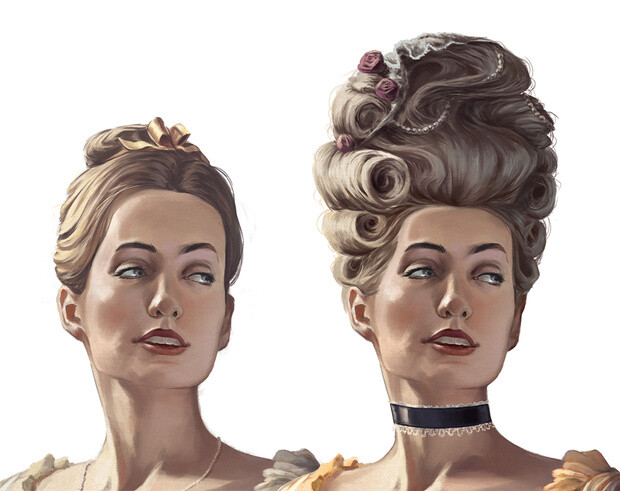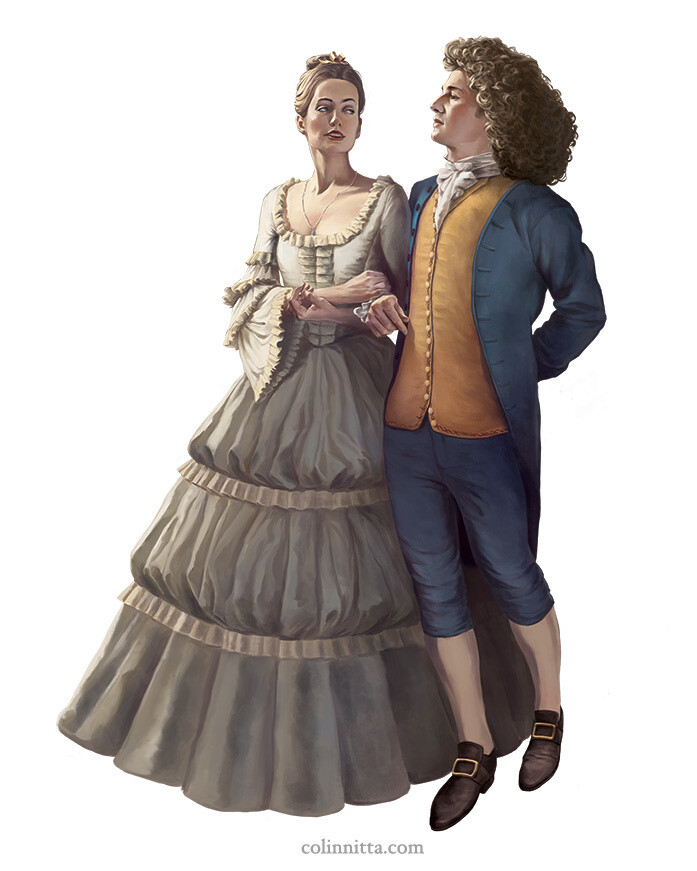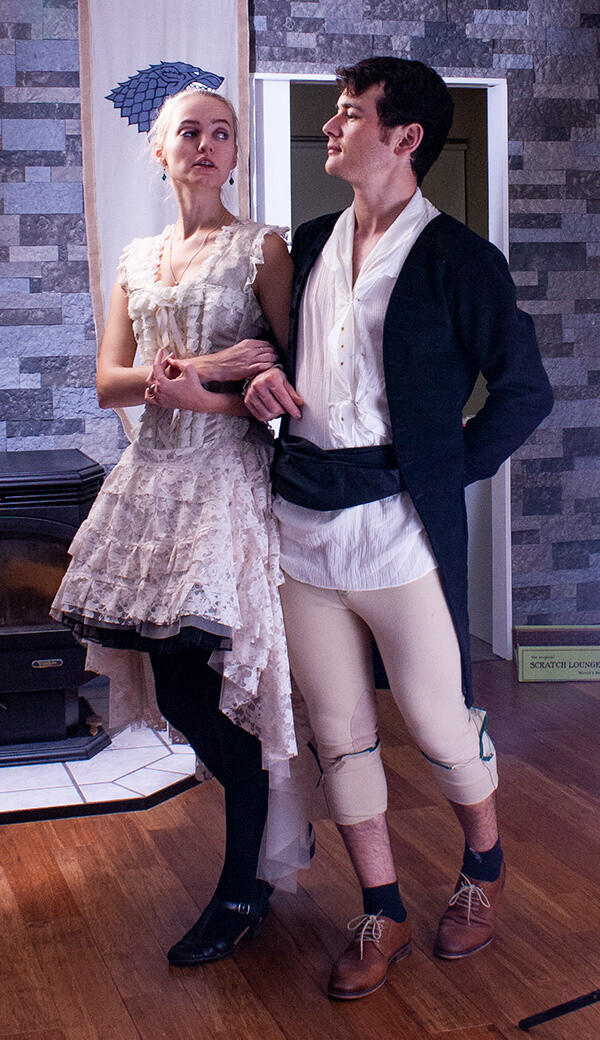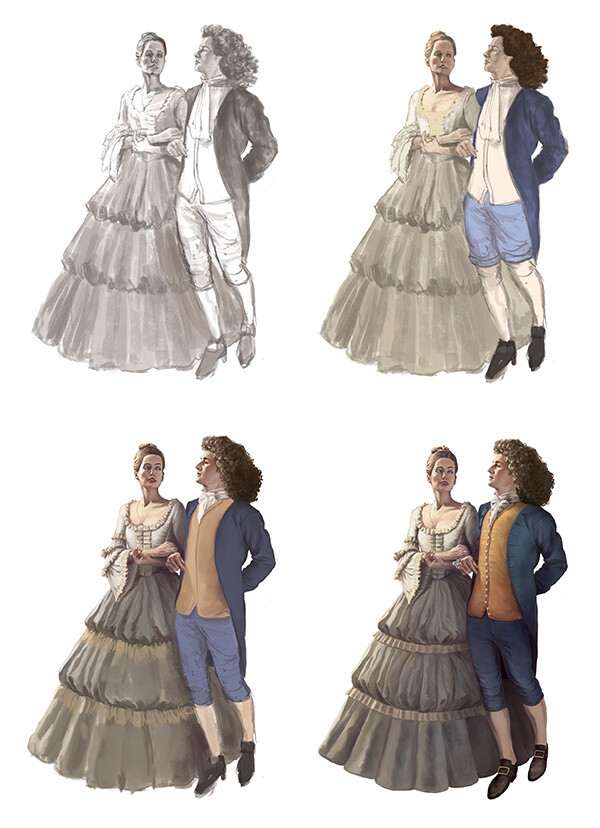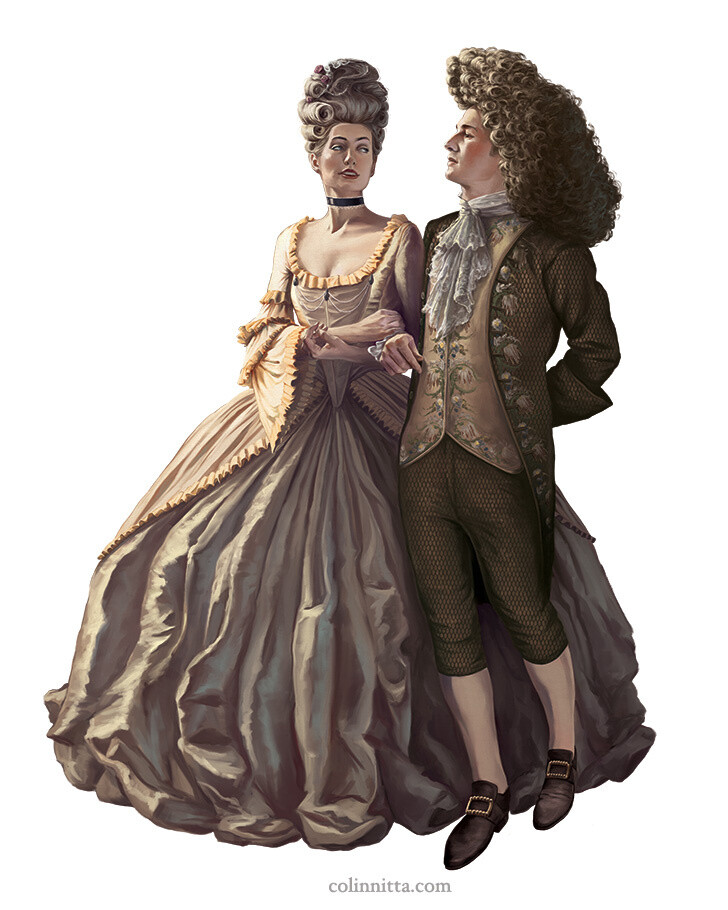I was talking to my friend Galen a few days ago regarding the visual development for “Go For Baroque.” As the game designer on the project, he’s more into the nuts and bolts of how the mechanics are designed, but I like to keep him informed on the visuals so he can know where the look and feel of the game is headed. We got to chatting about creative projects in general and and he asked me a question that I get all of the time: how do you know when a piece is done?
It is a question that bedevils every artist I know. The long and short of it is that you can’t ever really know for sure when something is done. In the end it is a gut feeling: it just has to feel right, or if it doesn’t feel right yet, then a deadline will make it imperative that it feels right soon. With something as open ended as a board game, the difficulties involved in “getting it right” are multiplied, so I knew from the start that creating visual concepts for Go For Baroque wouldn’t be easy.
I decided to start by painting two characters of a high class background that players are attempting to woo and secure art commissions from. The above painting is my first try at this pair. One thing that I quickly discovered while diving into Baroque art is that it is a massive cultural period, spanning from roughly 1600-1750. Think about how much has changed since 150 years ago – since 1869? Now just rewind and try to imagine 1600-1750. It’s really difficult because we don’t have as good of a reference on time periods from that far back.
I started by setting up a reference shoot with my wife Laima and myself. I took around 20 shots and decided I liked this one best. Laima is wearing a Victorian dress and I have on a 18th century style jacket, a loose pirate shirt type garment, some riding pants and dress shoes. It’s definitely not perfect, and that’s OK! 95% of the time, I don’t have exact costume reference. I instead go for a “base” to build off of: simple garments that have the rough cut and drape of what I need.
Working completely in Photoshop, I start by drawing the basic forms and layering up from there (a timelapse of this is coming soon!). As usual, much of time gets spent in the drawing phase, getting anatomy and proportion right and understanding the relationship between the two characters in space. Ironically, that technical stuff was the easiest part of the image. Getting the style right was what turned out to be the most tricky!
I shared the first version of these characters with some fellow artists for feedback. On the whole, everyone enjoyed the painting itself, but no one really understood that these people were nobility. I realized I hadn’t sold the characters themselves quite enough. When I showed it to Laima, she told me that the female character appeared as though she had borrowed that dress and was going to a ball for the first time. She didn’t look like she “owned” the outfit. So… back to the drawing board I went!
I remade my inspiration board and really, really started digging into Baroque fashions. I realized that I had been too influenced by modern trends, and so I decided to drill down to a specific time period of around 1700-1720. Clothing was quite possibly even more important to the people of this time than it is for us. After all, our clothes are now mass produced and very cheap, while the suits and dresses of this time were handmade – and must have cost a fortune by comparison.
I then created a quick series of rough costume redevelopments in Photoshop using the Artboards feature. This is really great when you want to see a bunch of small changes side by side and is a common technique in the concept art world. As I dug deeper into the historical inspiration, I found that the dress shape and size was constantly changing according to the fashions of the day. In particular, a large, teacup like shape was what turned out to be very iconic for the style I wanted, so I decided to go with number 8.
That’s what I’m talking about! Now they look like they are playing the part. Costume can do so much for telling a story about characters and imparting to the viewer what it is they are all about. I now feel that these two are going to be excellent mascots for “Go For Baroque,” summing up the grandiose, bordering on the edge of crazy, dramatic flair that was all over this artistic movement.
I had so much fun painting this crazy hair! You could put all sorts of things into that massive up do. Coming soon: the aformentioned timelapse of this piece from start to finish, and a few more technical notes on how to transform a basic piece of reference material into something much

